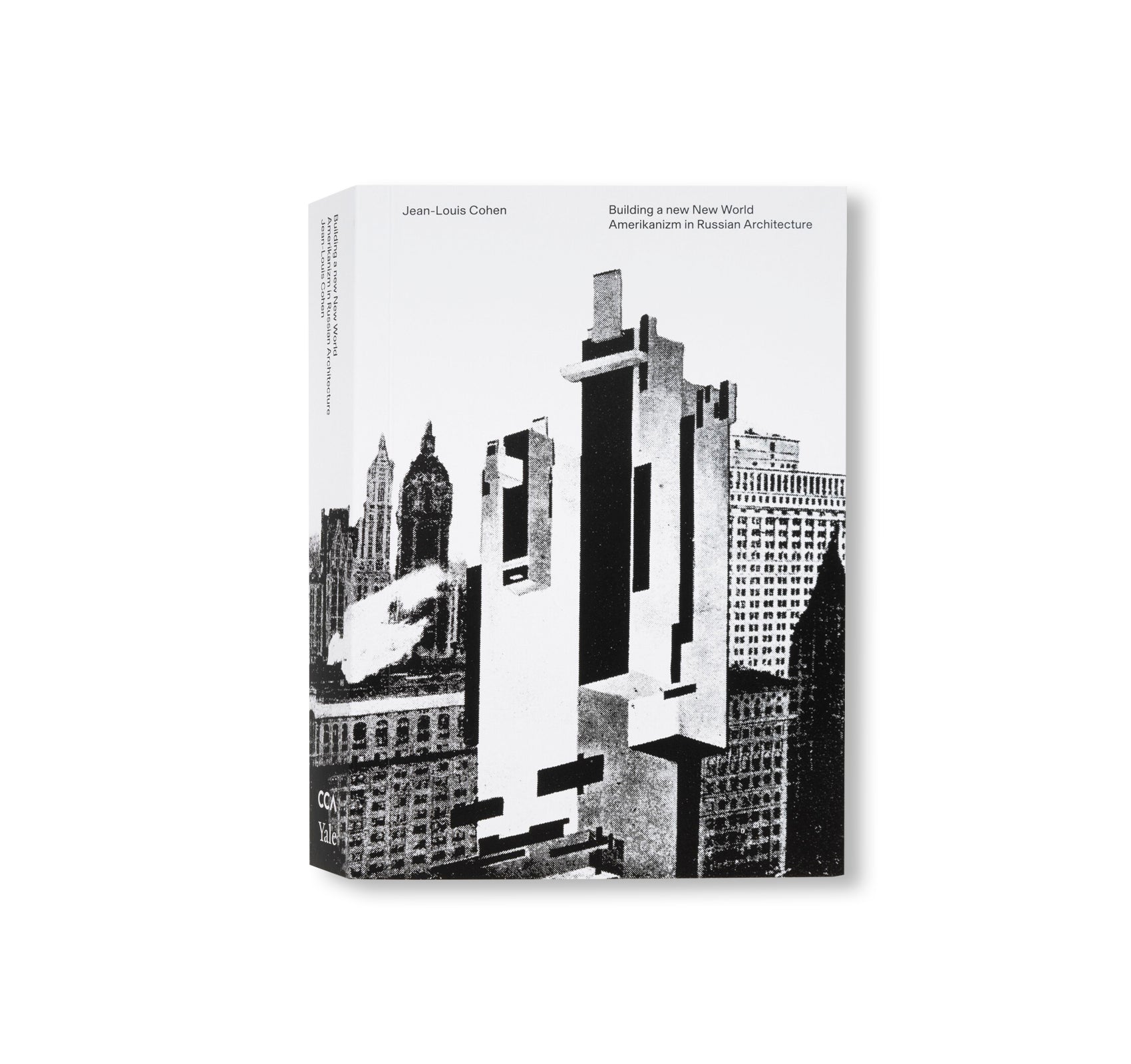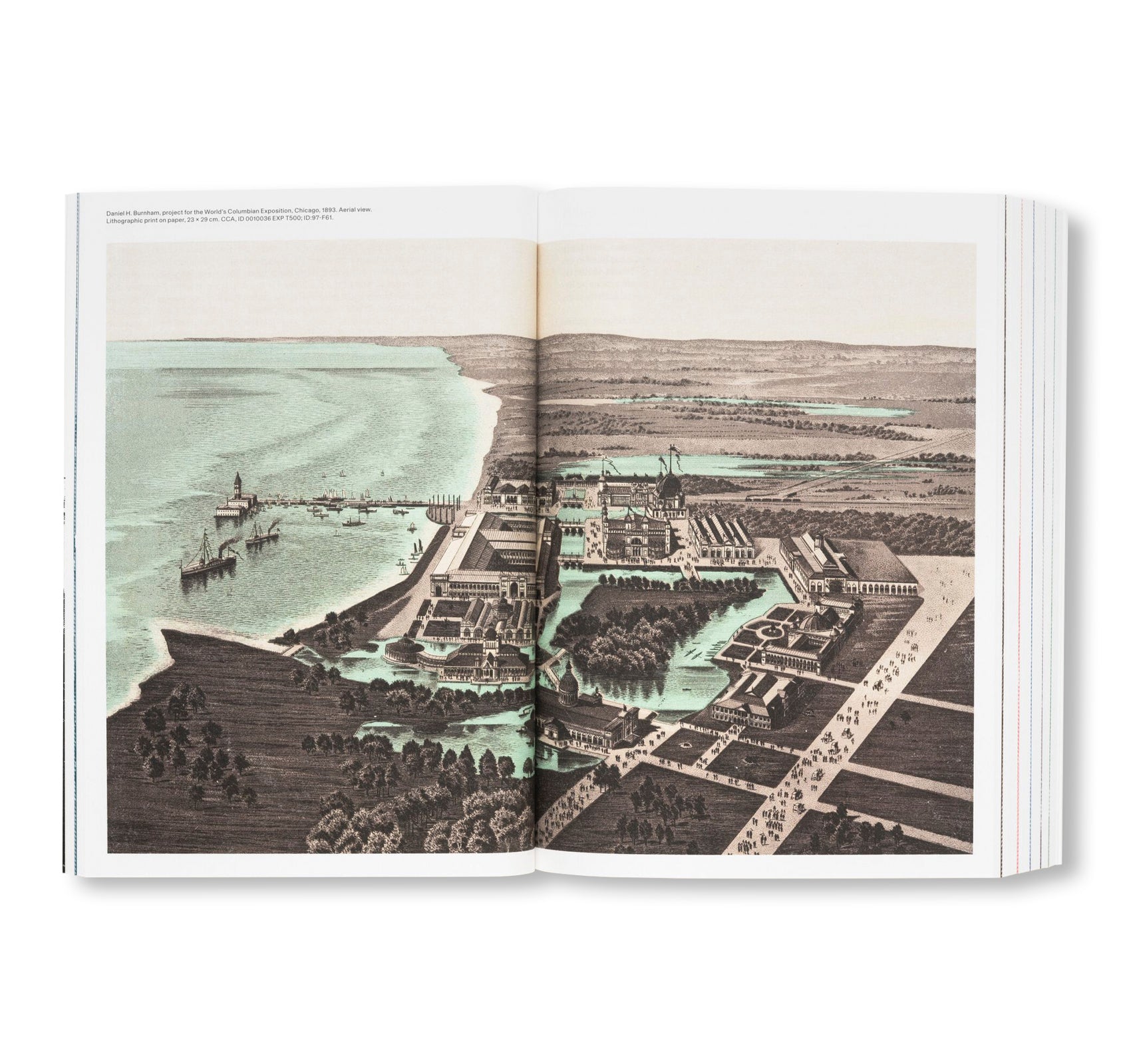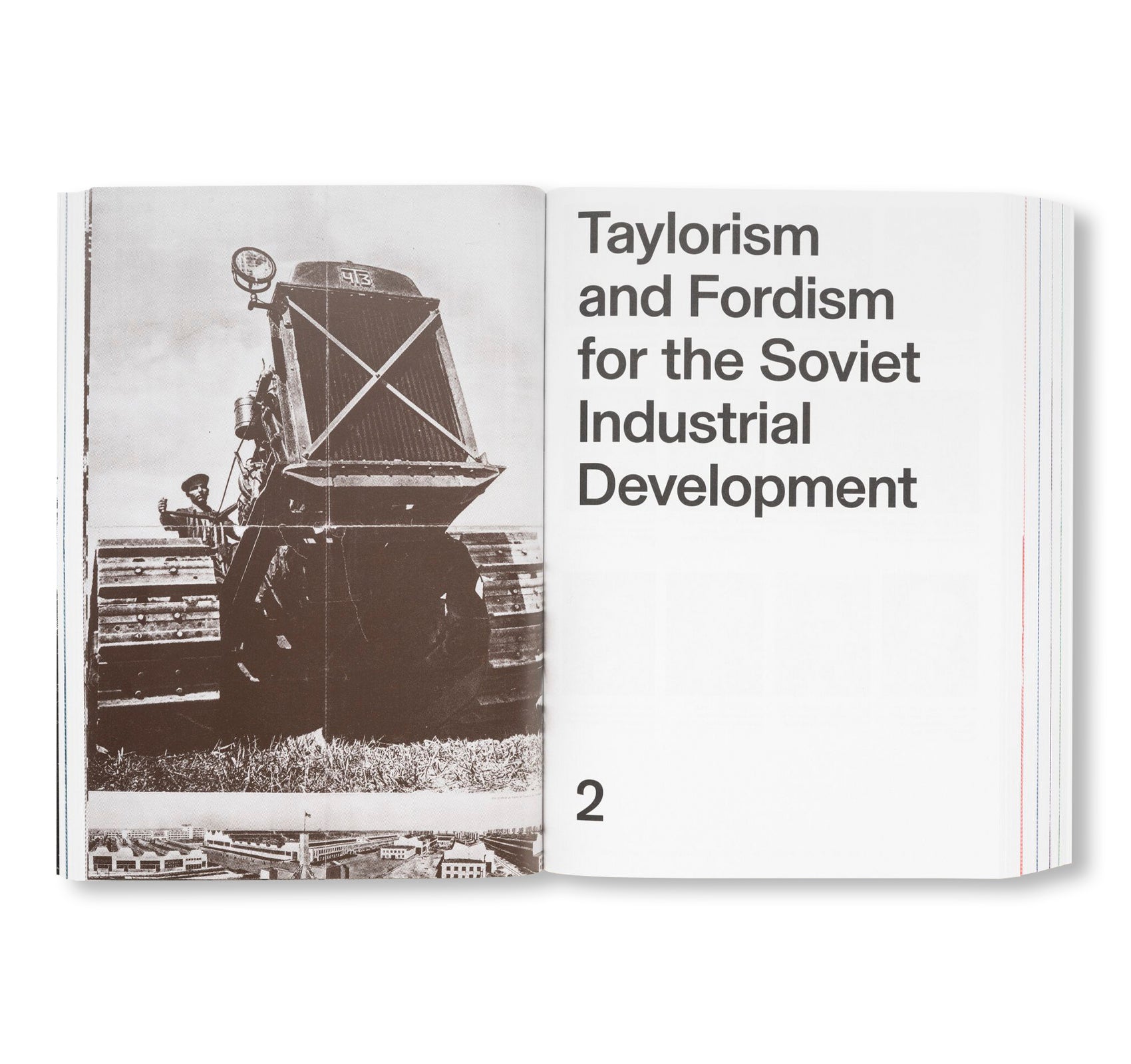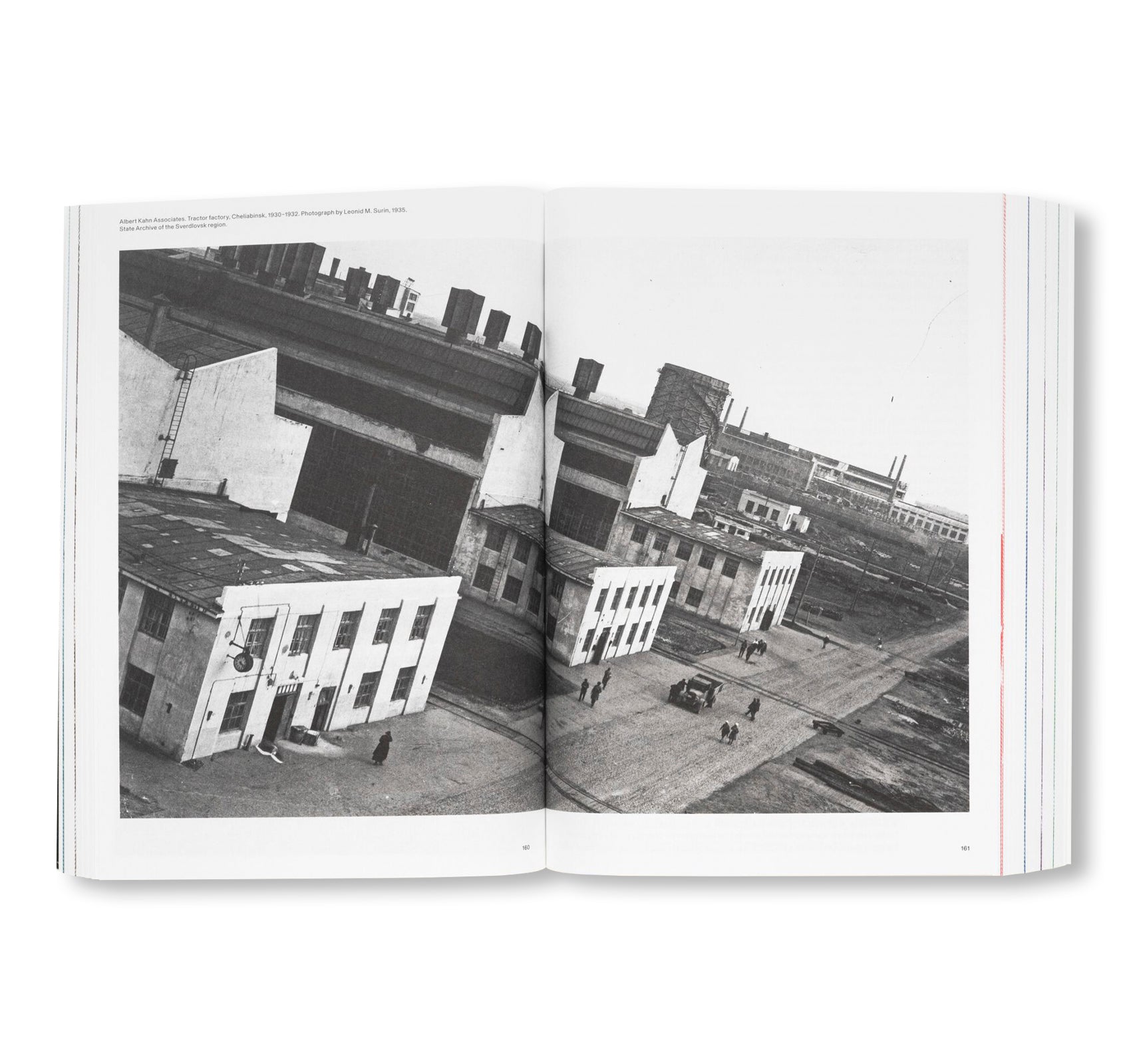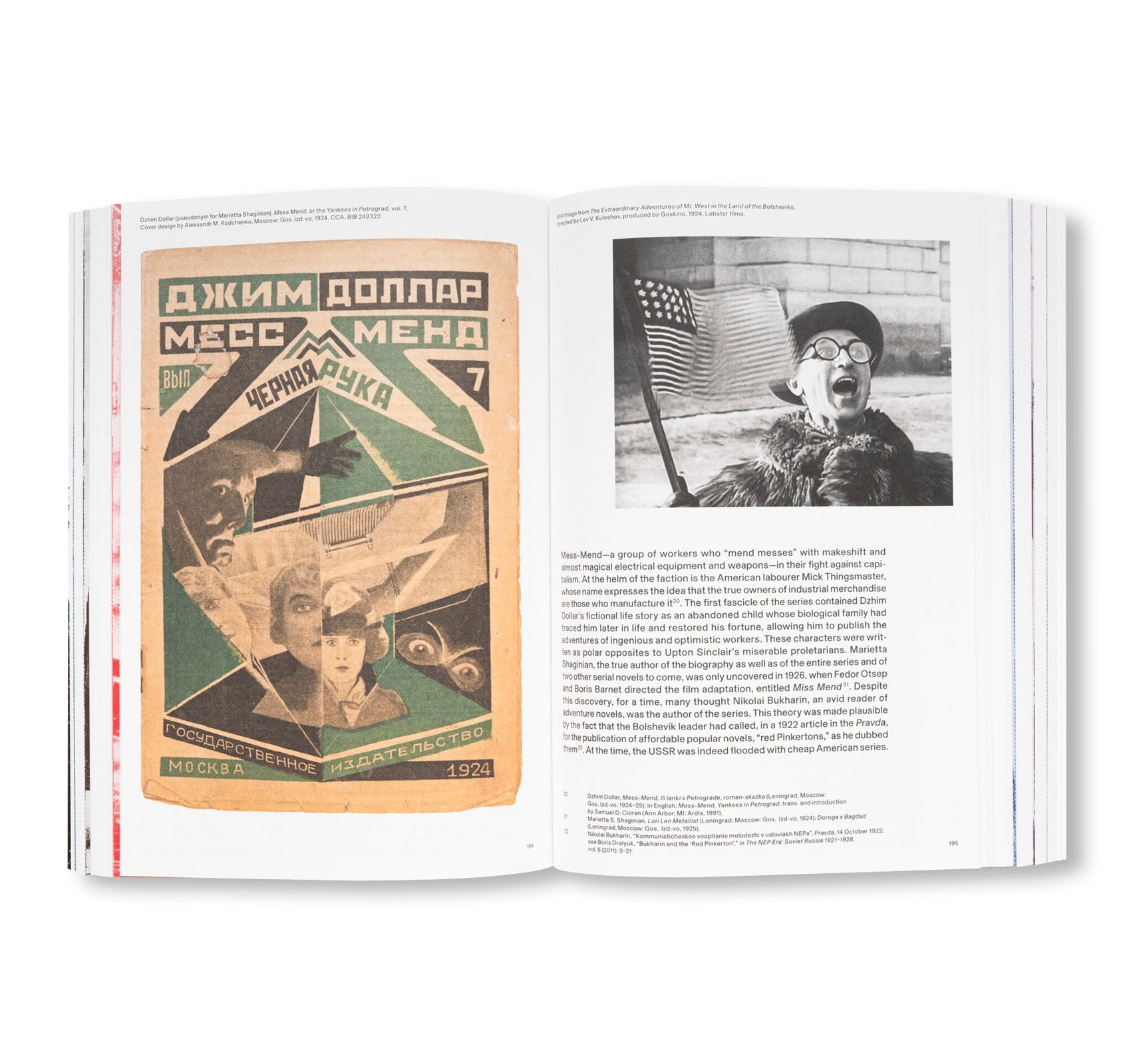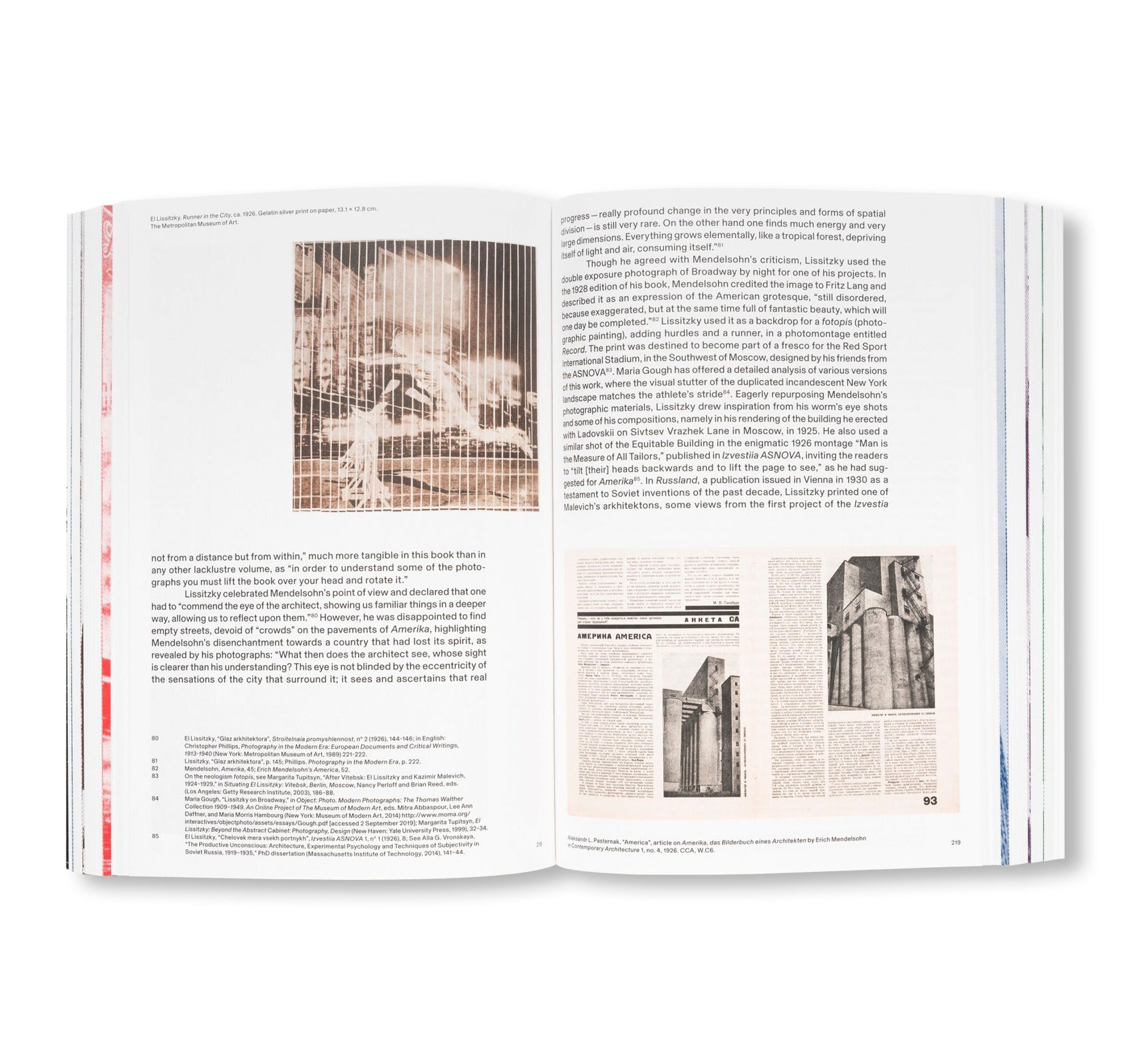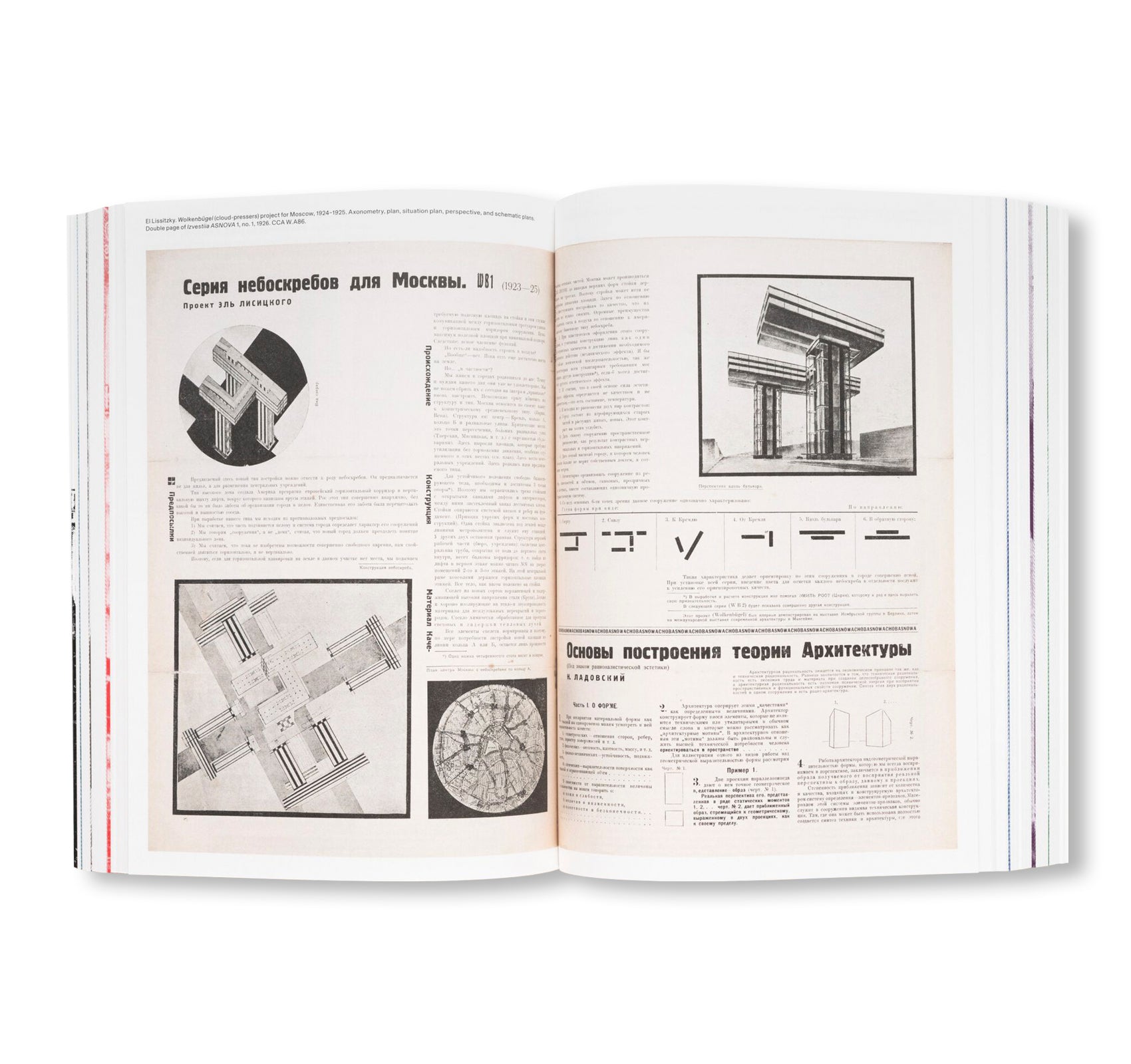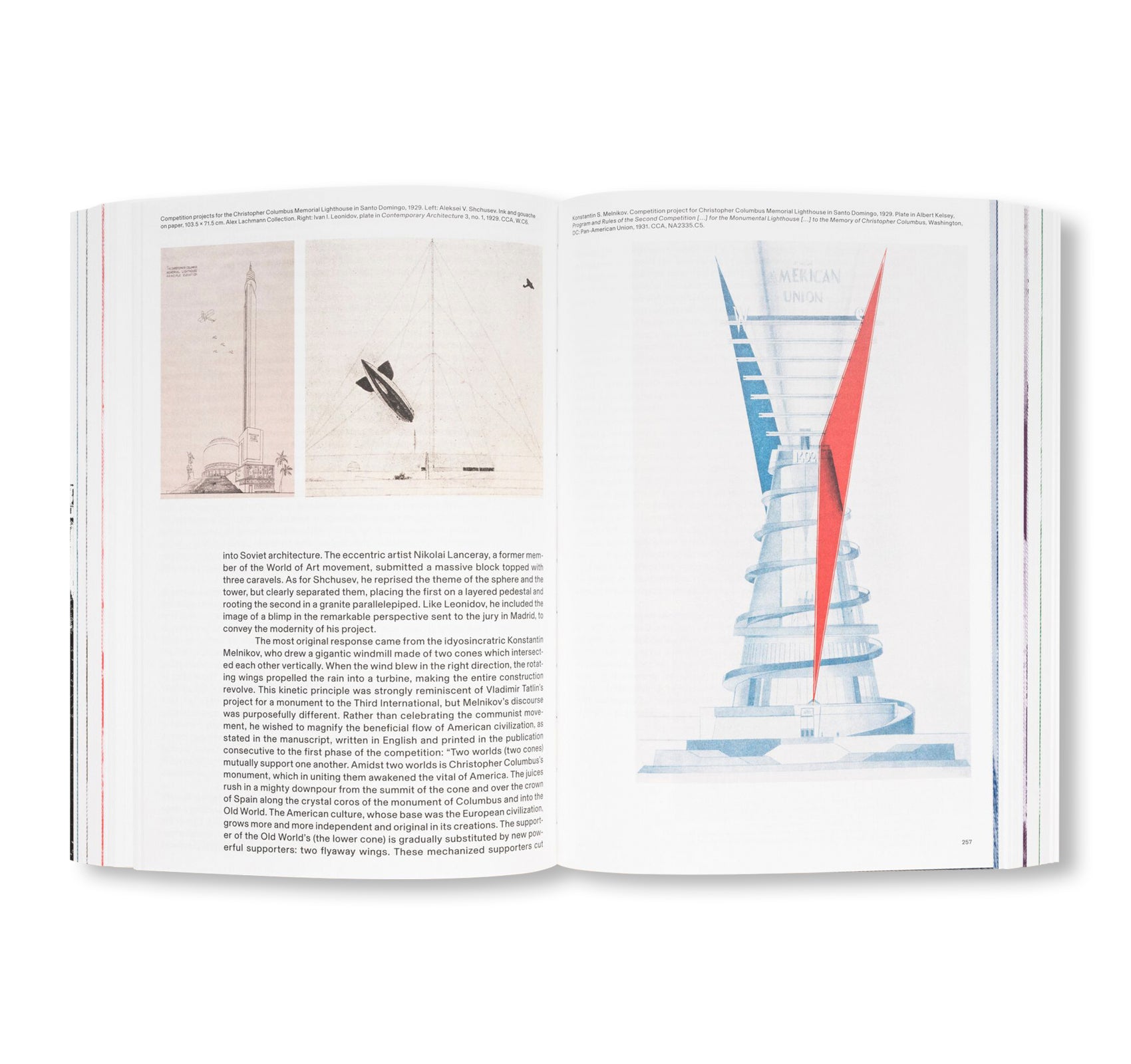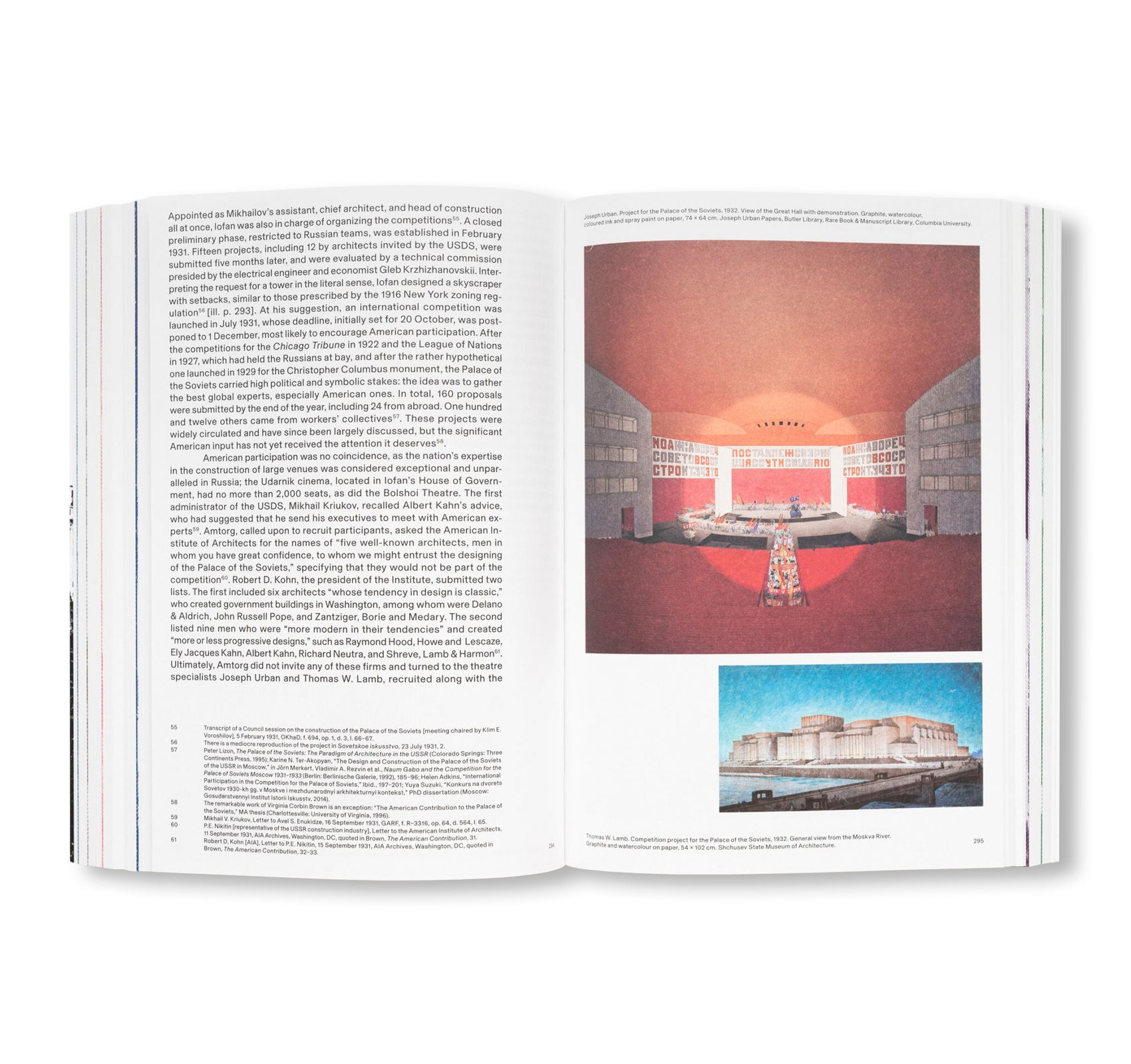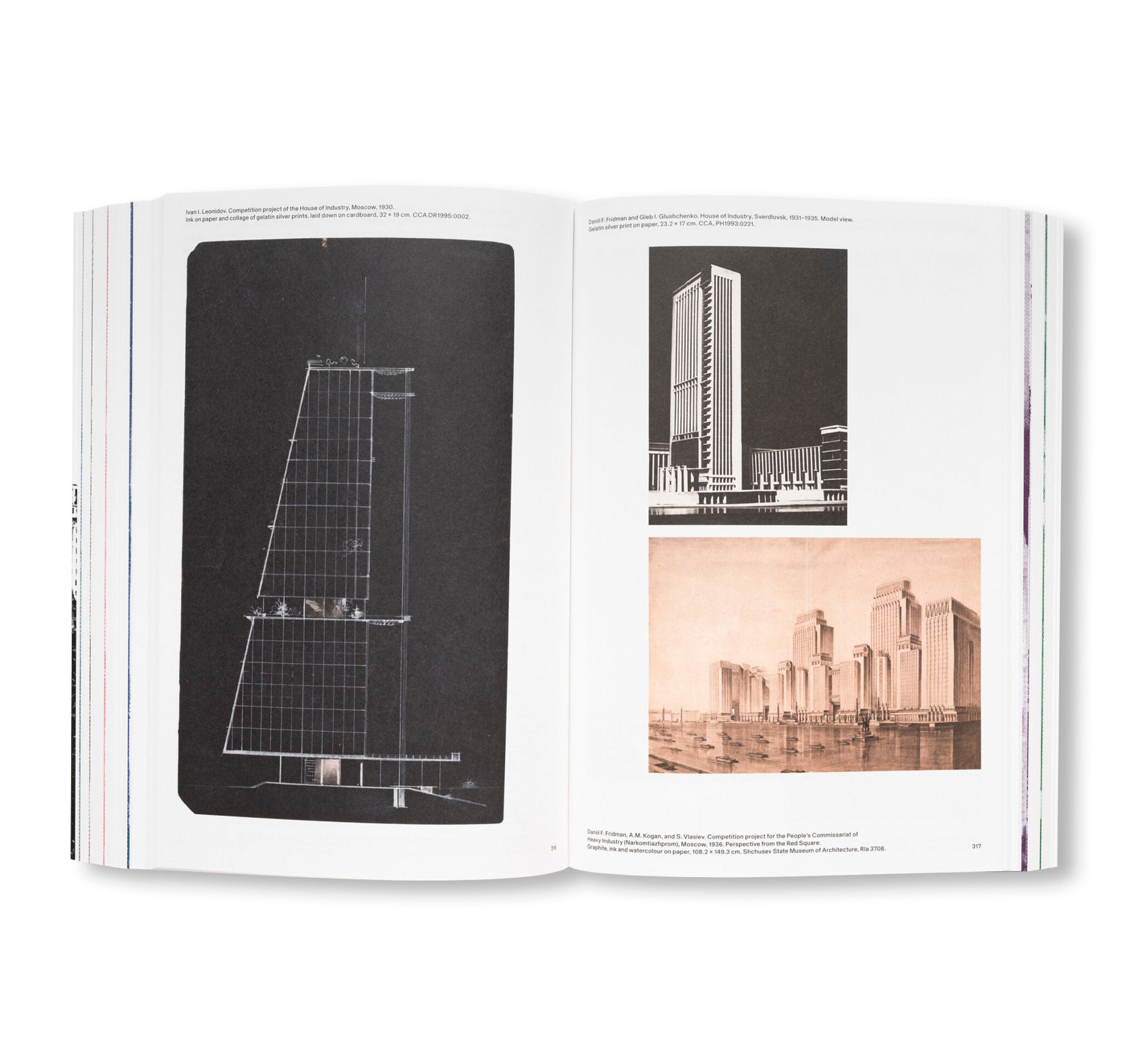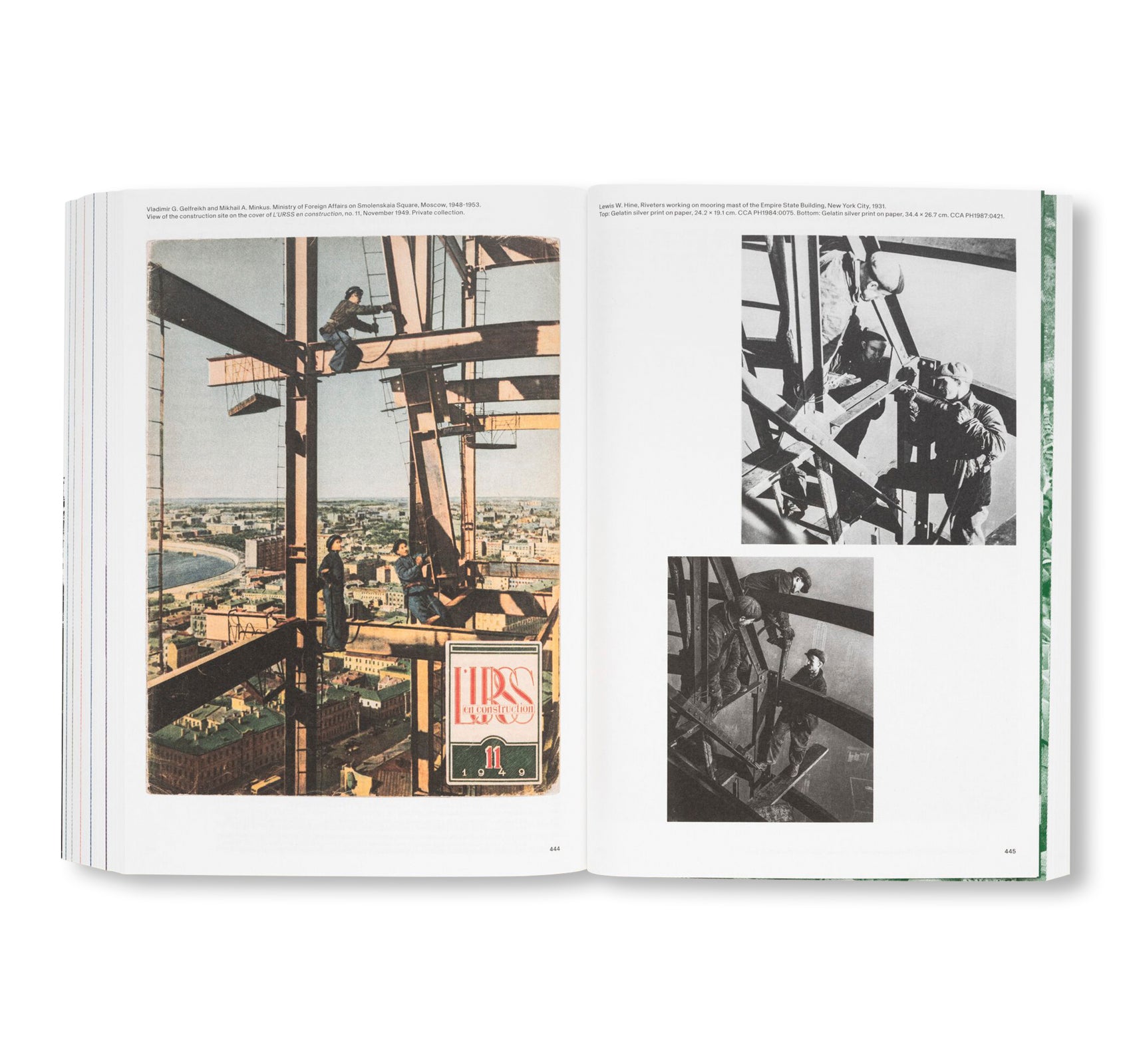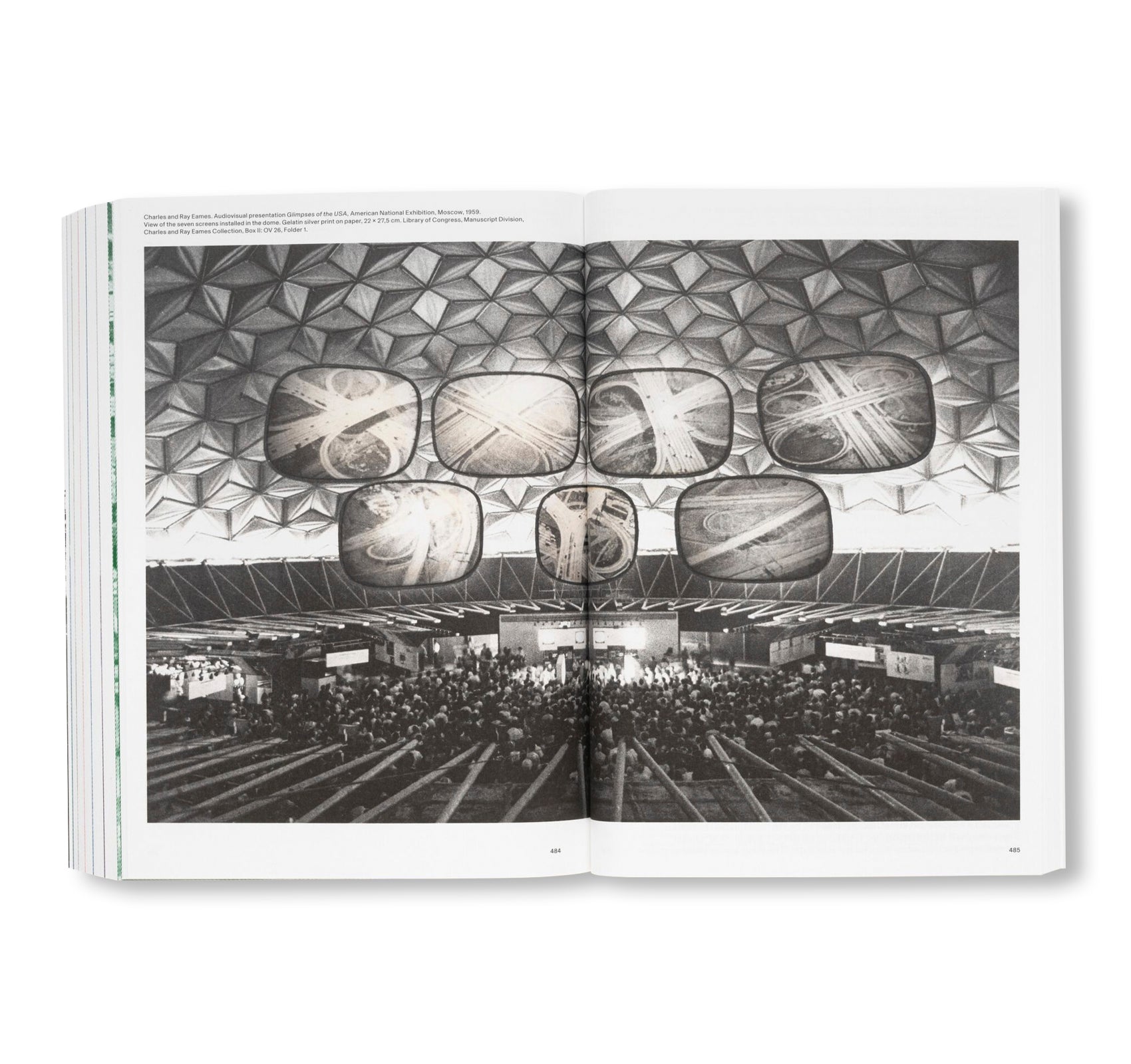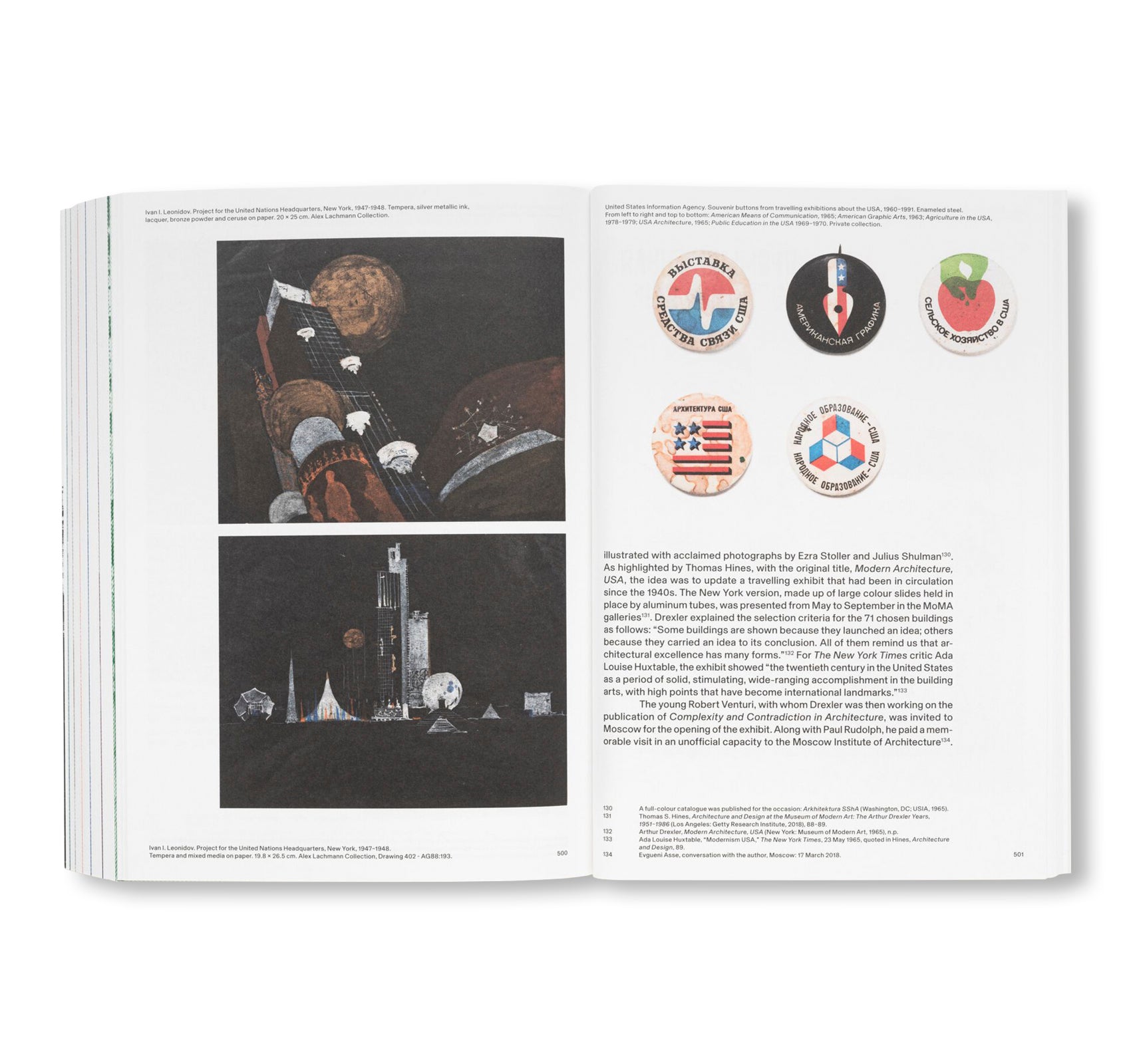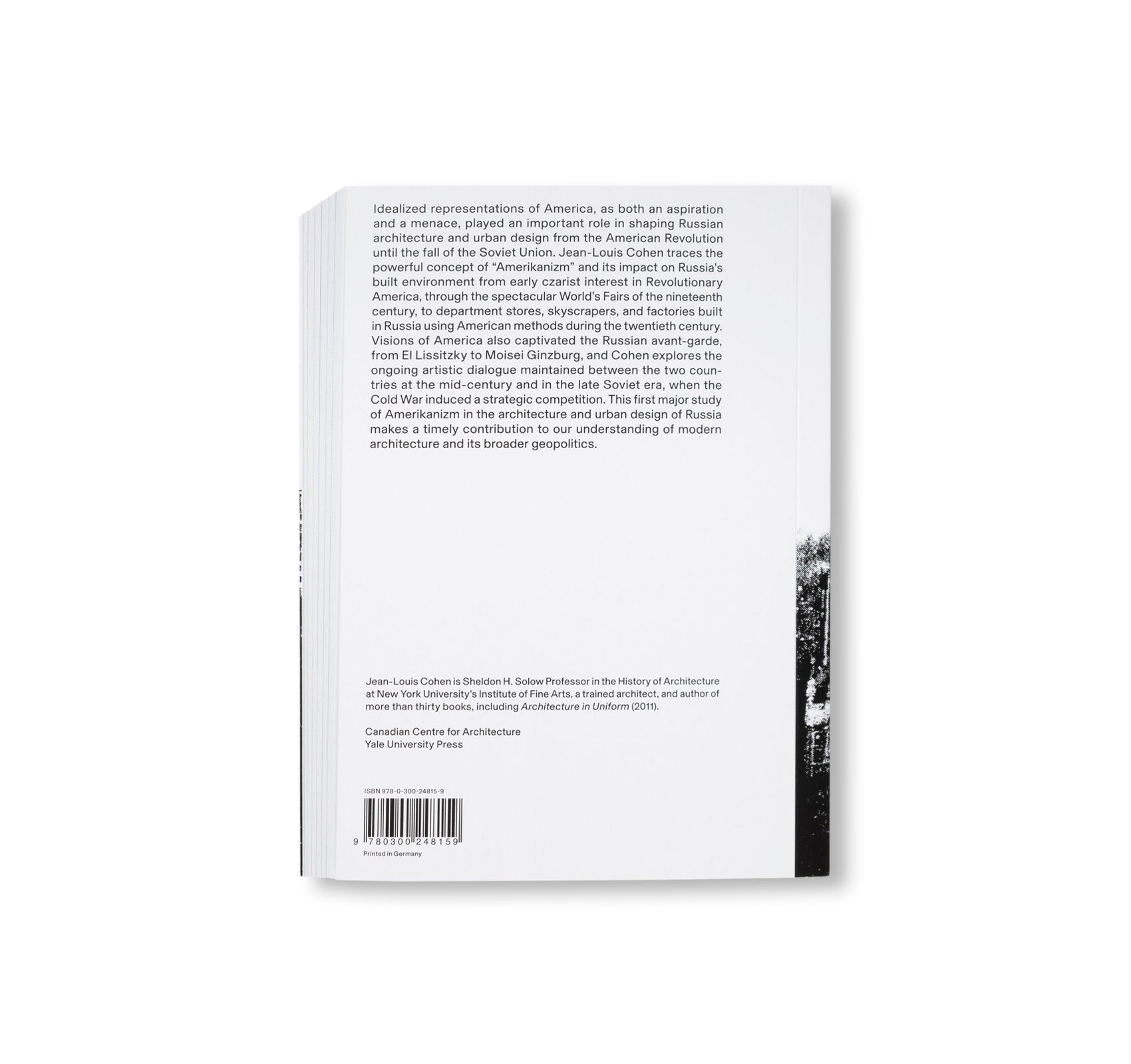BUILDING A NEW NEW WORLD: AMERIKANIZM IN RUSSIAN ARCHITECTURE
フランス人建築家、建築史家であり、モントリオールの建築ミュージアム、「CCA(Canadian Centre for Architecture、カナダ建築センターとも)」で多く作品がアーカイブされているジャン=ルイ・コーエン(Jean-Louis Cohen)の作品集。アメリカ独立革命からソビエト連邦崩壊までの間にロシア建築や都市設計が憧れ、目標とし、また脅威としても大きくその爪痕を残したのは、理想化されたアメリカであった。
本書は、革命期のアメリカに対するロシア皇帝の関心から19世紀に開催された華やかな万国博覧会、20世紀にアメリカの手法を採用してロシアで建造された百貨店や高層ビル、工場に至るまで、「アメリカニズム」というコンセプトとロシアでの建築環境への影響を追う。
アメリカ革命期における初期のツァーリ(ロシア皇帝)視点による関心をはじめ、19世紀の華々しい万国博覧会、20世紀にアメリカの手法を採用してロシアで建造された百貨店や高層建築、工場などを介して、「アメリカニズム」の歴史とロシアの建造環境に及ぼした影響を辿る。また、ロシア人アーティストであり、デザイナー、フォトグラファー、タイポグラファー、建築家、論争家であるエル・リシツキー(El Lissitzky)や、ロシア人建築家のモイセイ・ギンズブルグ(Moisei Ginzburg)を含む、ロシア・アヴァンギャルドの面々もアメリカの展望に刺激されていた。作者は20世紀半ばからソビエト連邦の末期、戦略的競争を誘発した冷戦時代に両国が保ち続けた芸術の対話を追求している。
他にも、ロシア人小説家や政治家、都市計画に携わった人々がアメリカで辿ったさまざまな旅路、アメリカからロシアへと流れた文化や技術の考察、両国の知識人らによる国内の土地占有率と開発率を追ってみると、不思議と並行しているという事実を発掘される。ロシアの建築と都市計画に関する「アメリカニズム」研究である本書は、現代建築とそれに関する多様な地政学をより理解することができる一冊。
Idealized representations of America, as both an aspiration and a menace, played an important role in shaping Russian architecture and urban planning from the American Revolution until the fall of the Soviet Union. In Building a new New World: Amerikanizm in Russian Architecture, Jean-Louis Cohen traces the concept of “Amerikanizm” and its impact on Russia’s built environment from early czarist interest in Revolutionary America, through the spectacular World’s Fairs of the nineteenth century, to department stores, skyscrapers, and factories built in Russia using American methods during the twentieth century. Visions of America also captivated the Russian avant-garde, from El Lissitzky to Moisei Ginzburg, and Cohen explores the ongoing artistic dialogue maintained between the two countries at the mid-century and in the late Soviet era, when the Cold War induced a strategic competition.
Following the many journeys of Russian writers, politicians, and planners through the American territory, foregrounding the constant streams of cultural and technological transfer from the U.S.A. to Russia, and revealing the parallel fascination among Russian and American intellectuals with the ongoing pursuit of land occupation and development within their respective borders, this book calls into question our understanding of modern architecture and its broader geopolitics.
